IoT technology fixes for shrimp farming in India include an aeration monitor and a highly precise moving feeder
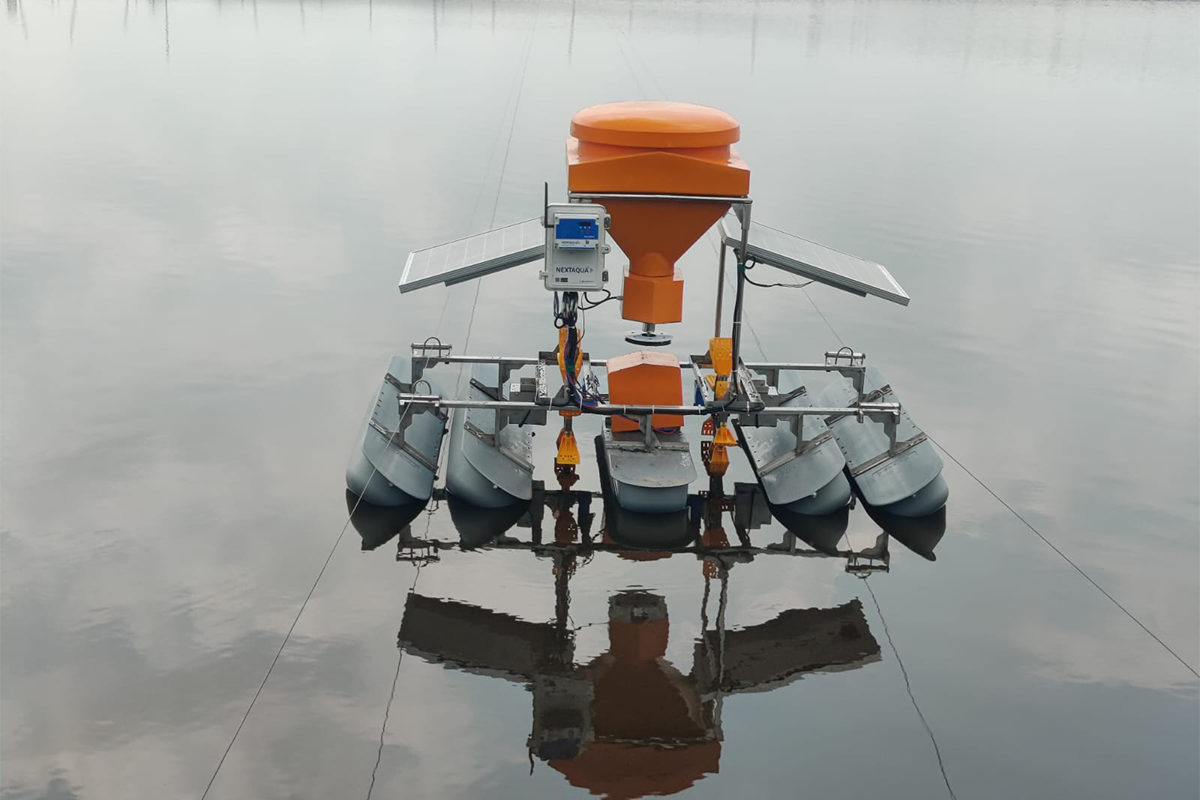
As the CEO of AquaExchange Agritech Pvt Ltd. in Andhra Pradesh, India, Pavan Kosaraju’s background spans engineering, finance and aquaculture. After attending the Indian Institute of Technology and becoming an engineer, he completed his MBA in financial risk management at the European School of Management Technology in Berlin.
Growing up in Andhra Pradesh, a predominant region for shrimp farming in India, Kosaraju is no stranger to the challenges that shrimp farmers face. Returning to India after his time in Germany, he reconnected with shrimp farming when he settled in his hometown of Vishakhapatnam. Visiting shrimp farms and processing plants, he soon noticed a lack of financial support in the sector.
“India has a good, robust banking system but shrimp farms weren’t taking advantage of it and that piqued my interest,” Kosaraju told the Advocate. “With my background in finance, I quit my job and went on a journey to better understand the data ecosystem surrounding India’s shrimp farms. I spent a few months across the value chain and discovered that financial institutions were staying away because of a lack of transparency or data visibility. If you want to ensure financial help, you have to start at the beginning with the primary actors – in other words, the farmers. That is how AquaExchange was born.”
Wanting to help shrimp farmers in India improve their productivity and profits, Kosaraju pioneered a portfolio of patented flagship Internet of Things (IoT) products including PowerMon, a device for live aeration monitoring and effective Power Factor (PF) management using IoT, and AquaBot, an auto-cruise, highly precise moving feeder. Both innovations have been selected as one of six finalists for the Global Seafood Alliance’s Responsible Seafood Innovation Award, in the aquaculture category. The winner will be determined by an audience poll at the Responsible Seafood Summit in Saint John, New Brunswick, Canada, next month.
“Shrimp farmers, particularly in India, cultivate semi-intensively,” said Kosaraju. “They farm around 100,000 to 200,000 shrimp per acre but the water cannot sustain that many shrimp, so farmers have to infuse additional oxygen. However, this can be unpredictable due to unreliable power, unscheduled power cuts, infrastructure failures along a power line or breakdowns of local transformers or aerators.”
“Farmers also feed their shrimp by hand from a small boat, but this is not always reliable either and feeding patterns can be uneven so some shrimp are overfed and others underfed,” Kosaraju continued. “Hand feeding cannot be measured or tracked, while excessive or uneaten feed results in poor water quality parameters. Aeration and feed problems ultimately result in [dissolved oxygen] issues, water contamination and stress leading to disease and uneven growth.”
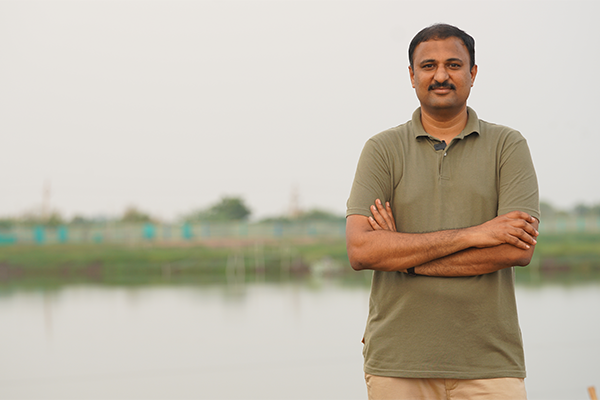
Since 2020, AquaExchange has been demonstrating its value proposition to all stakeholders in the system by using its patented technology to improve the lives of thousands of Indian shrimp farmers. The company’s power management tool PowerMon continuously monitors power consumption on shrimp farms based on machine learning techniques. Together with an automatic power factor controller (APFC), which manages the capacitor, it can also measure a farm’s PF, or how efficiently power is being used.
When a disruption occurs and isn’t rectified (farmers can set a period of time in which to address a problem), PowerMon alerts the first person in the chain of command (for example, the farm supervisor) before contacting famers through immediate mobile alerts or calls. Farmers can monitor the aerators, oxygen levels and other operational issues from their cell phones, while the system optimizes power usage and can reduce electricity consumption by 20 percent. To date, more than 500,000 calls have been made to farmers, alerting them to potential critical issues.
AquaBot is a solar-powered, self-sufficient automatic feeder that moves across the water while distributing feed, allowing farmers to feed their shrimp efficiently while maintaining good FCRs. It removes the need for manual intervention and stops uneven feed distribution as shrimp are fed evenly and timely. The result is no unused or wasted feed, better water quality, lower production and labor costs and faster shrimp growth. Thanks to real-time data, farmers can take appropriate mitigation measures, make better decisions and understand the level of efficiency on their farms. AquaBot has also successfully reduced FCRs by 10 percent.
“We are bringing viability and sustainability into shrimp farming,” said Kosaraju. “Our solutions help farmers with higher reliability and efficiencies in terms of aeration and feed management, while providing ROIs (return on investment) within the first couple of months of usage. By tracking power usage and feeding efficiency, we can tell farmers how much electricity they have saved on their farm every month or how their shrimp are growing. When a farmer has proper data visibility like this, the result is financial support and less input costs. The farmer has better control, reducing the risks and bringing costs down so that their margins improve.”
In addition to the above two products, AquaExchange offers a suite of nine products to streamline farmers’ operations. The data generated by these devices is delivered to the farmer in one single application, helping them make the right decisions at the right time, avoid losses and improve productivity.
If you want to ensure financial help, you have to start at the beginning with the primary actors – in other words, the farmers.
To date, AquaExchange has successfully automated about 40,000 acres, enough to produce around 100,000 tons of shrimp a year. The company has also established a unique, pay-as-you-use subscription model for two dollars per acre per month. The idea is to prevent upfront capital costs that farmers cannot afford and eliminate any risks that farmers may perceive over direct payment.
“Farmers tend to think of things from a crop-to-crop perspective,” said Kosaraju. “Their entire vision is one crop, and they don’t know the risks involved when adopting this type of technology. Because they have had bad experiences on their farms with other devices, they believe that technology doesn’t work. We have increased the adaptability of our solutions so that they fit into specific farming models. It’s also about syncing with the farmers’ mindsets. We are not asking them to trust us for life, but rather for several months.”
Indian shrimp researchers earn a patent for WSSV diagnostic tool
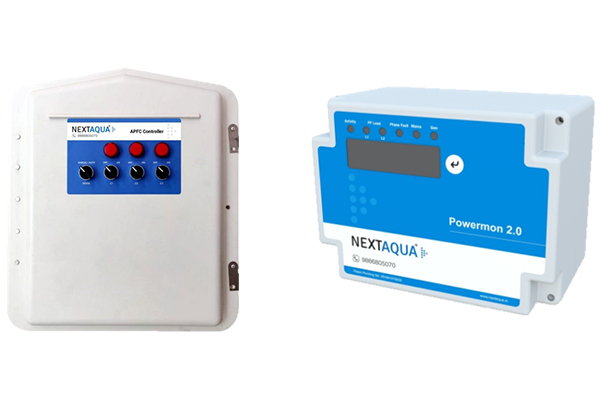
More than 15 percent of India’s shrimp farms – of which 98 percent are small and medium-sized – have already subscribed. Meanwhile, AquaExchange’s platform, which is powered by data from the devices, has facilitated banks to issue loans at low-cost interest rates, while the company offers other means of support such as vibrio kits, fermentable probiotics or traceability solutions in compliance with the latest FDA guidelines. There are also positive environmental impacts, Kosaraju noted. In India, reducing electricity use and improving feeding efficiency on shrimp farms can help decrease carbon emissions, as it results in less coal burned for power production and less soya produced for shrimp feed.
With prospects to benefit shrimp, the environment, farmers and shrimp farming worldwide, the novel solutions from AquaExchange could help to drive the sector forward.
“Over the last eight to 10 years, vannamei production has exploded in India,” said Kosaraju. “When something happens that fast, it’s natural for inefficiencies to creep in because there is so much focus on growth. Indian shrimp farming has grown phenomenally but over the last couple of years, this growth has plateaued. Now is the time to reflect on each stage of the farming process. We can help farmers address the challenges in adapting to the new world, not just in India but also worldwide.”
AquaExchange is already researching the potential of PowerMon and AquaBot on fish farms, but its first target is shrimp farming. Being a finalist for a Responsible Seafood Innovation Award is a welcome recognition, Kosaraju added.
“After three years of working in India and serving almost 15 percent of the country’s shrimp sector, we are now primed to work internationally and want to thank GSA for providing us with this platform,” he said.
GSA’s Responsible Seafood Innovation Awards – sponsored by the U.S. Soybean Export Council – for the aquaculture and fisheries categories will be awarded at the Responsible Seafood Summit in Saint John, N.B., Canada, on October 3, 2023. The winner will be decided by an audience poll.
Now that you've reached the end of the article ...
… please consider supporting GSA’s mission to advance responsible seafood practices through education, advocacy and third-party assurances. The Advocate aims to document the evolution of responsible seafood practices and share the expansive knowledge of our vast network of contributors.
By becoming a Global Seafood Alliance member, you’re ensuring that all of the pre-competitive work we do through member benefits, resources and events can continue. Individual membership costs just $50 a year.
Not a GSA member? Join us.
Author
-

Bonnie Waycott
Correspondent Bonnie Waycott became interested in marine life after learning to snorkel on the Sea of Japan coast near her mother’s hometown. She specializes in aquaculture and fisheries with a particular focus on Japan, and has a keen interest in Tohoku’s aquaculture recovery following the 2011 Great East Japan Earthquake and Tsunami.
Related Posts
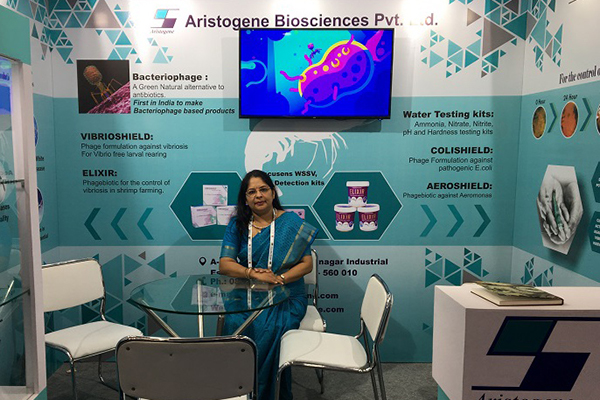
Innovation & Investment
‘Choices are limited when searching for alternatives to antibiotics’: How one veterinarian is employing bacteriophages to fight Vibriosis in shrimp farming
GOAL 2022: Bacteriophages can overcome antibiotics in aquaculture's fight against Vibriosis in shrimp farming, and Dr. C.R. Subhashini is leading that fight.
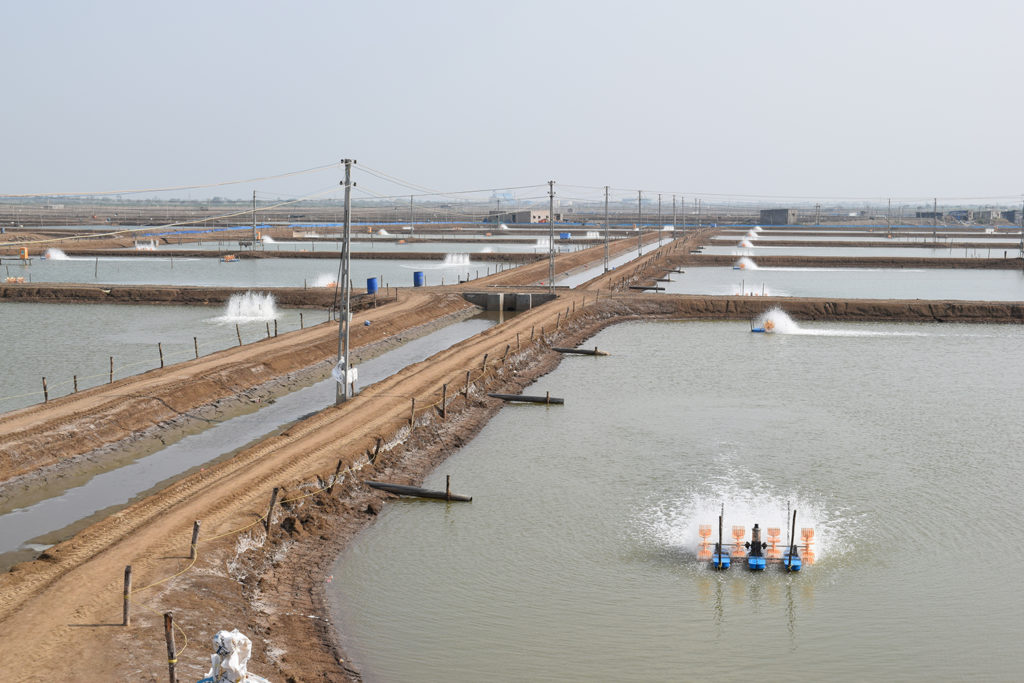
Intelligence
Can India sustain its farmed shrimp boom?
Long a global leader in farmed fish production, India has transitioned into an aquaculture powerhouse. Can its expanding shrimp sector keep the rapid pace?
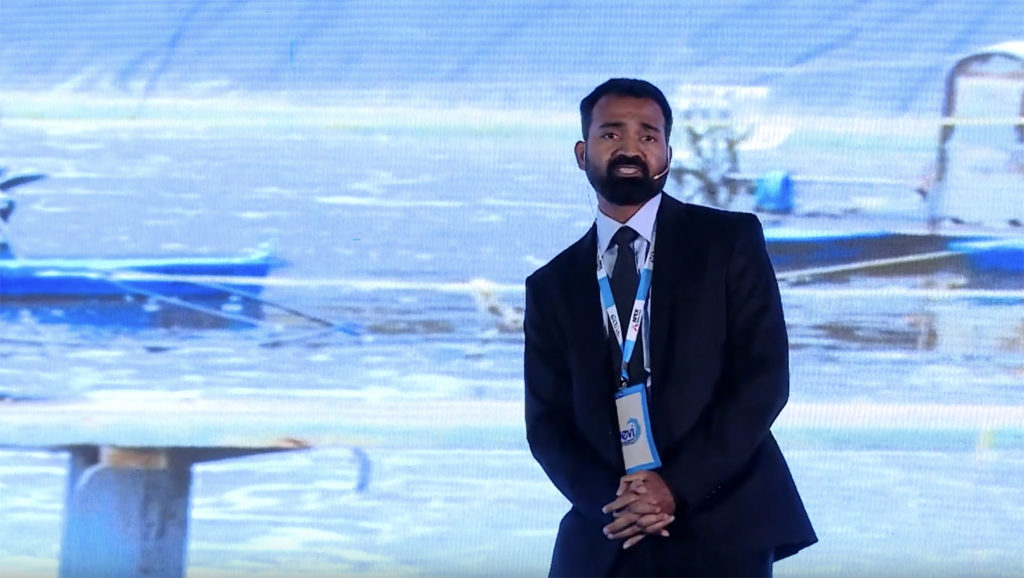
Intelligence
Bold Visions for India’s Aquaculture Future, Powered by PechaKucha: Rajamanohar Somasundarama
Rajamanohar Somasundarama delivers his PechaKucha presentation at the Global Aquaculture Alliance’s annual GOAL conference, held this year in Chennai, India.
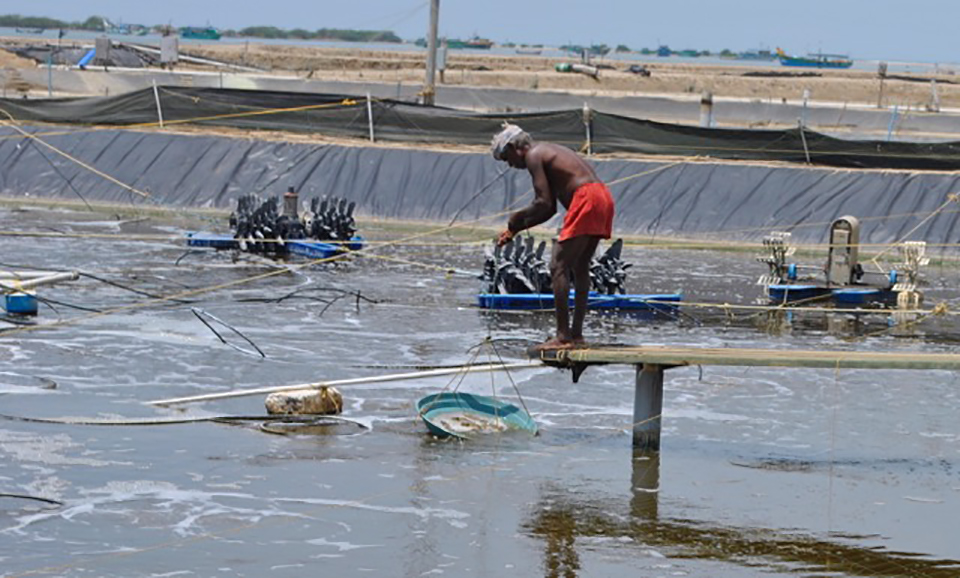
Innovation & Investment
If it’s broken, fix it: Startup takes on shrimp industry in India
A serial tech entrepreneur and a shrimp trader want to be Amazon for India’s shrimp farming industry. An accelerator program half a world away has brought them closer to their goals.


